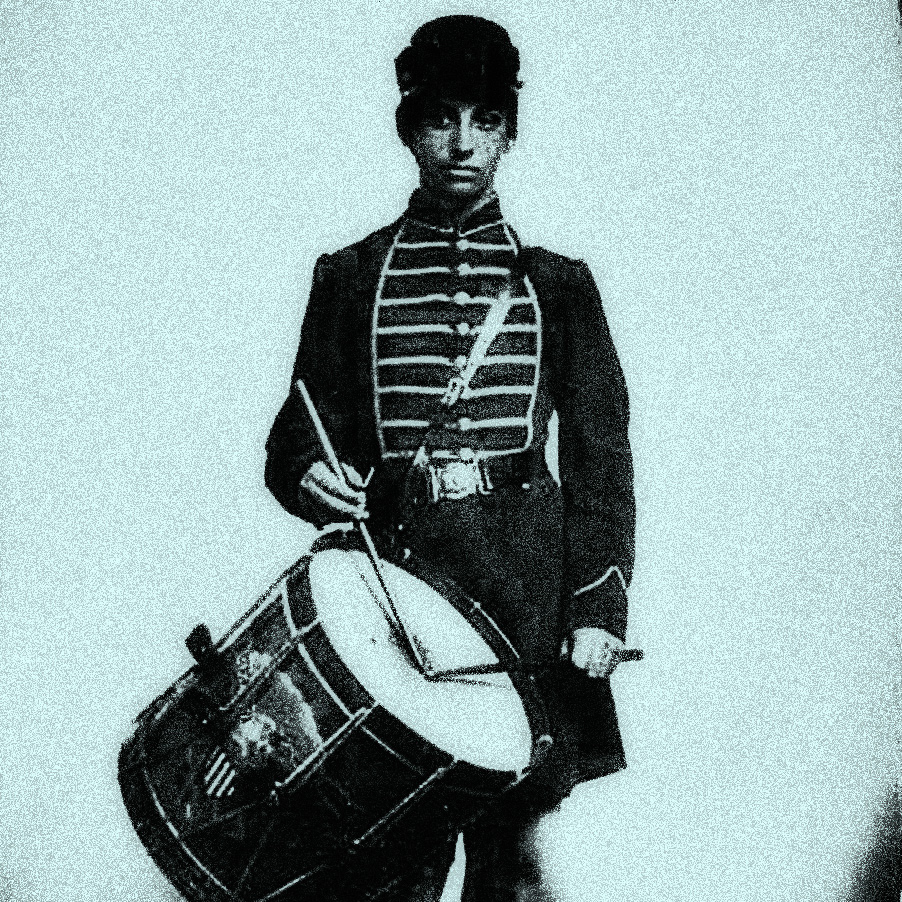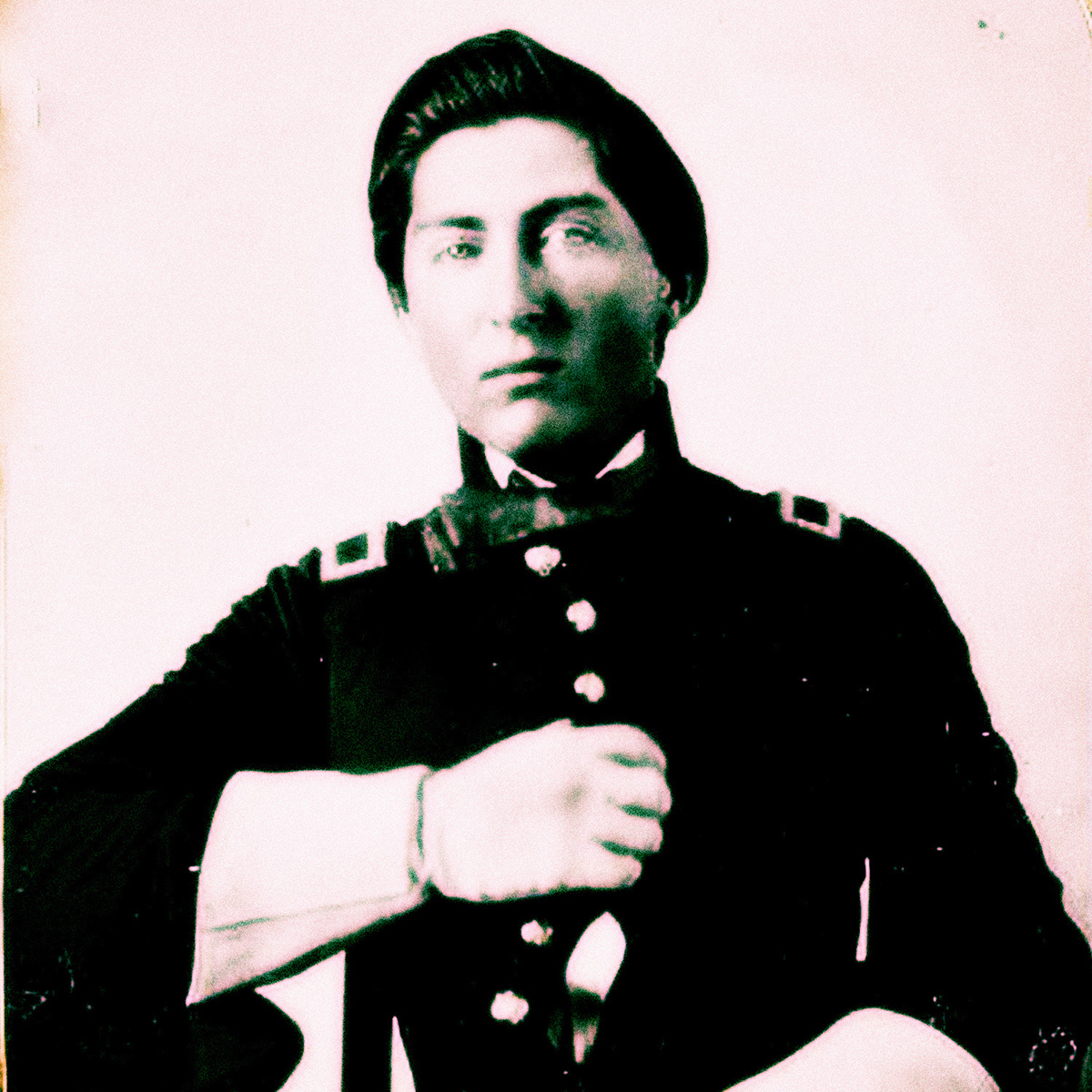1. Lyons Wakeman
Lyons Wakeman born Sarah Rosetta Wakeman is the only transgender solider to be awarded burial with full military honors and buried as a man in a National Cemetery. Wakeman had lived as a boy with her family in New York before the War, for three years she fought as a man with the 153rd New York Infantry, and in a US Marine Hospital she died as a man. During the Red River Campaign, Wakeman contracted measles and yellow fever that eventually ended his life. Wakeman was a valued solider and at no point did her commanders acknowledged the medical reports that stated Wakeman was a woman. It can be concluded that she/he would be what today is a transgender person as he did have many relationships with women and had always lived lived life as a boy or a man. His family, fellow soldiers and doctors knew his true sex, but no one treated him as woman. At Chalmette National Cemetery in New Orleans in 1864, the Unites States Army buried the first known transgender solider killed during battle.
· Source
AGO, carded medical records, 153rd New York, cards for Wakeman Lyons, RG 94, National Archives; AGO, CMSR, 153rd New York Infantry, Wakeman Lyons, RG 94, National Archives; burial register, entry 6322, Chalmette National Cemetery, NPS.

2.Albert D. Cashier
Albert D. Cashier born Jennifer Hodgers served throughout the entire war with 195th Illinois Infantry. America’s longest living transgender veteran died in 1905. Cashier after the war lived in four towns in Illinois where he lived as a man. In his old age Cashier was force to move to Veterans Home in Quincy Illinois. At the home his true sex was discovered and was transferred to the Watertown Mental Institution in Rock Island, Illinois. At Watertown he was forced to wear a straight jacket, live in the female ward, and wear a Victorian dress. Cashier’s fellow soldiers campaigned for his release, but she died before the Veteran’s case was heard. After his death the Veterans of the 195th Illinois Infantry fought successfully to have Cashier, buried not as Jennifer Hodgers, but as Private Albert D. Cashier. The Army agreed to have him buried with full military honors and he was laid to rest in his original uniform in the Military Section of Saunemin, Illinois. Today it can be determined she/he would be a transgender person.
· Source
AGO, CMSR, 95th Illinois Infantry, 25 Nov. 1915; Veterans Administration, pension application file C 2,573,248, RG 15, National Archives; Janice Petterchak, “A Conversation on History,” Dispatch 4, no 13 (1991); Gerhard P. Clausius, “The Little Soldier of the 95th: Albert D.J. Cashier, ”Journal of the Illinois State Historical Society 51, no. 4 (1958); case file of Albert D.J. Cashier, IVH; Lannon, “Albert D.J. Cashier,” 88-105; Davis, “Private Albert Cashier; Eileen Conry, great-granddaughter of Patrick Hodgers, to DeAnne Blanton, 10 Cashier and will not verify whether such a file still exists (Joseph R. Buckles, Rules/ Records Administrator, Illinois Department of Mental Health and Developmental Disabilities, to DeAnne Blanton, 19 Nov. 1991).

3. Charles Martin
Charles Martin a drummer boy, served with the 141st Pennsylvania Infantry for five battles until her true sex was discovered in a hospital and was sent home. Her photograph was taken in a private studio after her service and was kept in a locket thought maybe to be worn by Charles. There is no source material that proves her real name and her existence or sexuality cannot be fully confirmed.
• Source
Postwar editorial note (unnumbered page following 272), journal of Gilbert Thompson, 1861-1865, LC; “A Women in Regimentals,” Detroit Advertiser and Tribune, 27 Aug. 1863; Craft On Hundred Forty-First Regiment, 101-2; “Hid Sex in the Army,” Washington Post, 27 Jan. 1901.

5. Loretta Velasquez
Harry T. Buford who was born Loretta Velasquez served in the Confederate Army and fought in the Battles of Blackburn’s Ford, First Manassas, and Ball’s Bluff. Buford is the only soldier to be charged with being formally charged with being a transvestite and served time in Castle Thunder Prison in Richmond, VA, but was released as her General George Anderson vouched she was a cross dresser as so to be a spy and serve the Confederate Army as a transgender agent. Velasquez did have children, but it is known she had many relationships with woman while she was a men. Today she most likely would be a bisexual woman.

4. France Hook
Frank Miller who was born as Frances Hook served for three years until he was captured in Florence, Alabama and become the first known cross gender prisoner of war. Miller was shot by a Confederate Guard and was released back to the Union on February 17, 1864and at General Hospital No. 1 in Nashville her photograph was taken. After the War she got married and had children.
• Source AGO document file record card 1,502,399, RG 94, National Archive

6. Mountain Charley
There are a number of stories about “Mountain Charley”. In the Colorado there is a rich history of her folklore about the transvestite miner. In 1885 a woman who only gave her first name as Charlotte told the paper she was the true “Mountain Charley”. Charlotte served in the Union Army for three years under General Blunt of Missouri. She tells the transcript that Blunt knew of that he was a she and used her as a spy to help give information on the confederate forces in Neosho, Missouri. After the war she lived in Golden, Colorado, until he lost too many bets in Central City and returned to Iowa as Charlotte where she married and became a housewife to avoid being killed by her lost bets. “Mountain Charley” had many relationships with women and today would most likely be a lesbian.
• Source “Mountain Charley.” Golden Transcript Jan. 14, 1885 p.4 c1-5 Clips: Biog.
Guerin, Mrs. E.J.

7. Frances Clayton
Jack Williams, born Frances Clayton served in a number of Missouri Regiments with her husband (who was killed) and is the only cross-gender solider who sat for both an expensive studio portrait of her as a woman and as a man in the samesitting. There is no source material that proves what regiment he/she served and all that exists is the before and after photograph which suggests either she did serve as a man, or paid to dress up in a man’s uniform for the fun of it (but this would have been extremely unethical and of poor taste). She did successfully collect back pay and bounty money, but nothing more is known of her life. Frances Clayton went to war to be with her husband who she served with and witnessed die. If there had been a gay male identity formed at that time she and her husband would have been labeled as a gay, but ironically they were allowed to have a sensual and loving relationship while serving in the Army. Men could hold hands, kiss, and even have sex without the fear of being thought to be “gay”, instead they would just be thought to be men of bad behavior. Today Frances Clayton would be straight, but in a odd twist of fate she can be argued to be an early hero for the rights of gay men.
• Source
“Eventful Story of a Soldier Women,” Cincinnati Daily Gazette, 2 Oct. 1863; “Eventful History,” Princeton Clarion, 10 Oct. 1862; “An Amazon,” St. Paul Pioneer, 26 May 1863; “Epitome, ”Frank Leslie’s Illustrated Newspaper, 19

8. Franklin Thompson
Franklin Thompson who was born as Sarah Emma Edmonds lived before the War as a man selling bibles. Thompson served with the 2nd Michigan Infantry for four years. It is known that Thompson had many relationships with women. After the war Franklin reverted back to being Sarah and lived herlife as a women. Edmonds today might be bisexual, lesbian or transgender. However, the United State Government believed she was a transgender person. In 1886 a law was passed by the US Congress and signed by President Grover Cleveland that declared that Sarah Edmonds was/and is Franklin Thompson and deserved to receive a full pension and a retroactive honorable discharge from the Secretary of War. She was buried with full military honors wearing a civilian dress in the military section of Washington Cemetery in Houston, Texas.
• Source
AGO, EB file 3132 C1884, RG 94, National Archives; pension application file SC 282, 136, RG 15, National Archives; “Remarkable Career,” Fort Scott (Kansas) Weekly Monitor, 17 Jan. 1884; AGO CMSR, 2nd Michigan Infantry, Thompson, Franklin, RG. National Archives.
